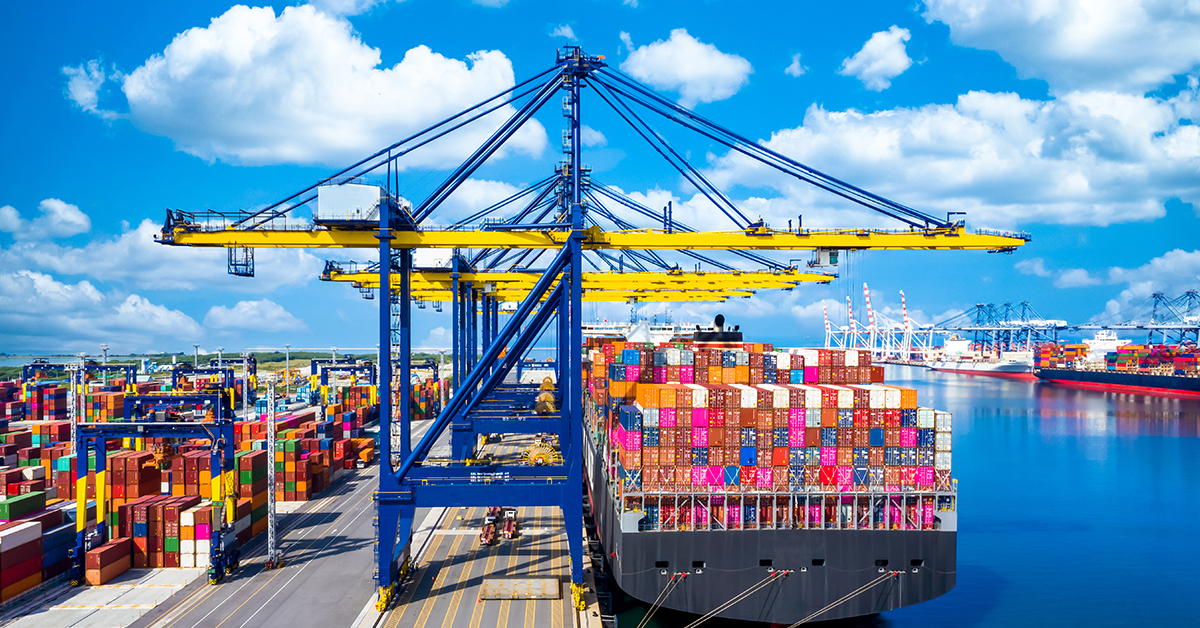WHAT ARE THE CHECKS ADMINISTERED BY VESSEL CREW DURING PORT STAYS FOR THE SECURITY OF CARGO ON BOARD?

Shipping container vessels abide by stringent safety procedures and time-bound schedules at ports of call. In the course of such port stays, the deck officers shoulder the responsibility of keeping a watch over the loading and discharge of cargo, as well as other activities happening onboard. As we can guess, for deck officers, port stays are often more demanding and stressful than uneventful days at sea.
By following a strict regimen, monitoring the different parameters of cargo handling can become a lot simpler and manageable compared with the daunting task they might appear to be. The important guiding principles we discuss here can help deck officers get the best out of the guard they keep when the vessels remain berthed at various ports of call.
Strategize effective cargo handling
It’s a good practice to survey the bays where the gantry cranes are functioning. Logging in the gantry numbers helps keep track of the gantry movements during the next rounds. Uniform discharging and loading of cargo helps to sidestep nonstop running of the Anti-heeling Systems. Operations inside the under-deck cargo hold need special attention. The hatch covers must be removed carefully to prevent any harm to the vessel’s primary structure. If the operations do not proceed according to the original plan, the planner must be consulted to arrive at the right solution. Careless handling of cranes causes damage to the ship’s structure and such instances call for filling up a stevedore damage report as well.
Being mindful of IMDG (International Maritime Dangerous Goods) containers onboard
The IMDG Code framed by the International Maritime Organization is an international code for the transport of dangerous goods by sea. It mandates the safe carriage of dangerous goods to safeguard the well-being of people and prevent pollution to the environment. Cargo categorized as IMDG must be handled with utmost care and priority. The deck officers must have a good grasp of the IMDG Code and they must handle its documentation, including IMDG spotting plan. To comply with the IMDG Code, dangerous goods must be stored away from the vicinity of staff accommodation. Boxes containing dangerous goods must display HAMZAT stickers to forewarn the staff handling them.
Handling Reefer containers
Reefers carry sensitive and perishable cargo, so they require careful handling. The services of a dedicated onboard electrical engineer must be available. Loading and discharge of reefers should be carried out under the presence and supervision of such engineers.
Out of Gauge (OOG) Cargo
Cargo such as heavy machinery, spare parts and boats come under the category of OOG. Such goods are typically stowed under the deck in the cargo hold, although they can also be loaded on flat rack containers on the deck. The lashings used to secure such out of gauge cargo differ from the usual container lashings. The deck officer must ensure that the stevedores have secured the lashes properly.
Inspection of Ship’s Draught
A ship’s draught must be carefully inspected during arrival, departure and the entire duration of stay at the port. The depth of water varies from port to port, so the deck officer must maintain a vigil on the draught and under-knee clearance, which are altered by the weight of the containers being loaded or the ballast water pumped in. A close visual examination helps make the right judgment because draught gauges need not always display the right position.
Examining Lashing rods, turnbuckles and twist-locks
Containers are secured to the ship’s main assembly and to the containers below, using lashing rods, turnbuckles and twist-locks. This prevents the containers from swaying and binds them together as a unified structure, reducing the chances of containers falling into the sea during rough weather. Stevedores manage lashing and de-lashing when the ship arrives at a port, but the deck staff may also assist during exigencies. The lashing must be periodically inspected by the ship crew to prevent mishaps. Lashings prove effective when they are kept moderately tight. Slacks on the lashing bar and turnbuckles must be corrected.
Managing Ballast Water
The duty officers must possess an expert knowledge of ballast operations. Inclinometers, which measures the degree a vessel slants while on water, must be monitored carefully during such operations. The intake of ballast water at ports should be kept at optimal levels. It is preferable to employ internal transfer of ballast water to render stability to the vessel while loading and discharging cargo. Some ports have enforced restrictions on de-ballasting, so the ship crew must be aware of such controls.
The safety of the personnel working onboard is equally paramount. There are more risks involved when a vessel is berthed at a port than when sailing in the seas. The safety of the ship’s crew and the shore stevedores must be taken care. Before departure, ensure that all documentations are complete.
The VS&B Containers group, headquartered in Chennai, provides new and used containers to NVOCCs and shipping lines in the Indian subcontinent, South East Asia, the Middle East and Europe. Their diverse fleet includes dry containers, reefers, open top containers and flat-rack containers. VS&B’s team of industry experts deals in container trading, container leasing, empty container repositioning, and in-house developed logistics software.
Please contact traders@vsnb.com and get your containers on time!
- Log in to post comments






